
Welcome to Hyperion Records, an independent British classical label devoted to presenting high-quality recordings of music of all styles and from all periods from the twelfth century to the twenty-first.
Hyperion offers both CDs, and downloads in a number of formats. The site is also available in several languages.
Please use the dropdown buttons to set your preferred options, or use the checkbox to accept the defaults.

'Ubi caritas', an antiphon taken from the Mass for Maundy Thursday, begins and ends with only the darker choral sound of the altos, tenors and basses. Each phrase of the text is repeated and the altos alternate singing them in two separate choirs. The tenors are subdivided into two voice parts in order to maintain four-part chordal harmony. After the sopranos enter for the exultant central section, the harmonic structure increases to five parts.
'Tota pulchra es' employs the texts of three antiphons from the Second Vespers for the Feast of the Immaculate Conception. The opening text alternates as a refrain between the other two verses, forming a five-section ABACA structure. It is set in three voice parts for subdivided sopranos and undivided altos, with an occasional expansion to four female voice parts. In contrast to the strict chordal harmony of 'Ubi caritas', this motet blends contrapuntal and chordal styles.
The short text for 'Tu es Petrus' is taken from the gospel of St Matthew, as used in the final antiphon of the First Vespers for the Feast of the Holy Apostles, Peter and Paul. The plainchant melody is set polyphonically for all four voice parts and the music rises to its most forceful climax at the very end of the motet.
The text of 'Tantum ergo' is set polyphonically for all four voices, with the plainchant melody carried in the soprano line, and freely imitated in the tenor part. Just as the melody is repeated in the second verse of the plainchant version, the entire polyphonic setting is repeated in Duruflé’s motet version.
from notes by Carl R Cunningham © 2016
extrait des notes rédigées par Wadham Sutton © 1989
Français: Hypérion
aus dem Begleittext von Wadham Sutton © 1989
Deutsch: Anke Vogelhuber
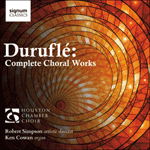 Duruflé: Complete Choral Works Duruflé: Complete Choral WorksA debut Signum recording from the Houston Chamber Choir presents the complete choral output of Maurice Duruflé, compositions as carefully crafted as they are infused with the Gregorian traditions of the distant French past to which their composer ...» More |
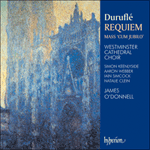 Duruflé: Requiem & Messe Cum jubilo Duruflé: Requiem & Messe Cum jubilo‘O'Donnell's achievement becomes the reference point against which future recordings of this repertoire are measured’ (Choir & Organ) ‘The Westminster Cathedral boys and men carry the lyricism and harmonic luxuriance to an ethereal plane. The choral singing is superb … helping o ...» More |
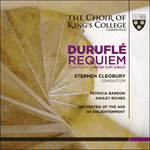 Duruflé: Requiem & other choral works Duruflé: Requiem & other choral worksKing’s College Choir joins with the Orchestra of the Age of Enlightenment and soloist Patricia Bardon in a wonderful new recording of Duruflé's Requiem.» More |
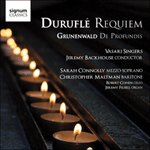 Duruflé: Requiem; Grunenwald: De profundis Duruflé: Requiem; Grunenwald: De profundis'Jeremy Filsell has clearly studied Duruflé’s orchestral versions and pulls out whatever stops necessary on the Tonbridge School organ to recreate the ...  Musical Opinion» More Musical Opinion» More |
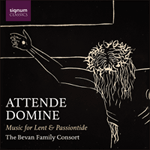 Attende Domine Attende Domine“Recording an album with the family is always moving, but this one was especially so because of the theme of the music. Like previous albums, this one contains well-worn family favourites beside newly discovered or unrecorded rarities, thanks to o ...» More |
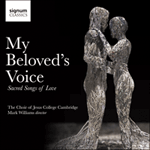 My Beloved's Voice My Beloved's VoiceMark Williams leads the Choir of the Jesus College Cambridge through an evocative selection of choral works inspired in varying ways by the Songs of Songs.» More |
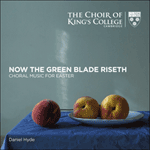 Now the green blade riseth Now the green blade risethA procession through time and history, with music rooted in ancient Gregorian chant all the way through to contemporary works charting the course of Holy Week and Easter, 'Now the green blade riseth' is also a demonstration of the flexibility and ...» More |
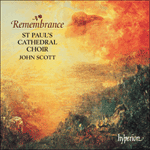 Remembrance Remembrance‘A lasting souvenir of a moving occasion, a fitting tribute to a great man, but above all, fine listening’ (Gramophone)» More |
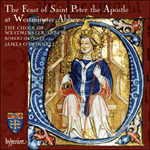 The Feast of Saint Peter the Apostle at Westminster Abbey The Feast of Saint Peter the Apostle at Westminster AbbeyAnother fascinating collection from Westminster Abbey, recreating a particular liturgical event. This disc contains music one might hear if visiting the Abbey on its patronal feast, that of St Peter the Apostle. The programme broadly follows the s ...» More |
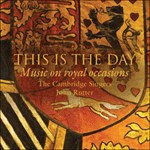 This is the day This is the dayThis album recollects and celebrates some of the choral music heard on royal occasions during the lifetime of HM Elizabeth II. The music chosen reflects the personal choices and commissions by the Royal Family for weddings, funerals, and anniversa ...» More |

